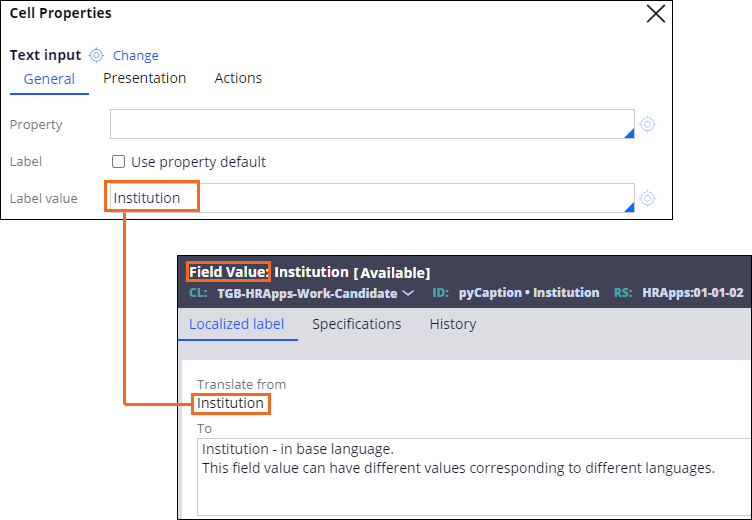
Design considerations for localization
Application design for localization
With careful attention to design, a Pega Platform™ application can support users who work in different languages or who use languages or alphabets that sort text values (such as customer names) according to language-specific conventions, rather than American English conventions.
Pega Platform provides a Internationalization and localization wizard that automates many of the steps necessary to create language-specific versions of your application. The Localization wizard identifies field values and text strings that are used in user interface rules. Text strings include labels, captions, tooltips, and instructions that appear in user-facing rules such as harness, section, list view, summary view, message, and portal rules.
To ensure the Localization wizard selects the necessary user interface rules, harness, section, and navigation rules are automatically selected for localization. Other design considerations include using field values for labels and confirmation notes, using paragraph rules for text, and customizing correspondence and work party rules in a ruleset used for each language-specific localization.
For more information about installing Pega language packs, see the help topic Installing Pega language packs.
Field values for labels and confirmation notes
You define field value rules for those rule types that use labels or other text strings under 64 characters. For example, a property reference in a section can use a field value as the label text. Applications translated into other languages have a field value with the translation for each UI form property.
Paragraph rules for text
Paragraph rules make content reusable. Instructions on a UI form, copyright declarations, and privacy notifications are all examples of reusable paragraph rules. Paragraphs longer than 64 characters can remain intact as boilerplate content and easily applied multiple times in an application.
For example, the instructions at the top of the form translated into Spanish are reusable in several areas of the application. In the center of the following image, drag the vertical line to see the instructions at the top of the form translated from English into Spanish.
Rules such as correspondence, paragraph, and work party rules contain text that is translated manually and stored in the corresponding translation ruleset with the aid of the Localization wizard. Text that is used in paragraphs, correspondence, and correspondence fragment rules is packaged and output in a pair of HTML files called Base.html and Translation.html. Both files initially contain the same text. Then the translator puts the translated text into the Translation.html file. Upload the compressed folder containing the translated paragraph and field values, change the locale, and run the application to view the translated text.
Note: You can use any text editor to edit the HTML translation file to insert the translated text.
Check your knowledge with the following interaction.
This Topic is available in the following Module:
If you are having problems with your training, please review the Pega Academy Support FAQs.
Want to help us improve this content?
